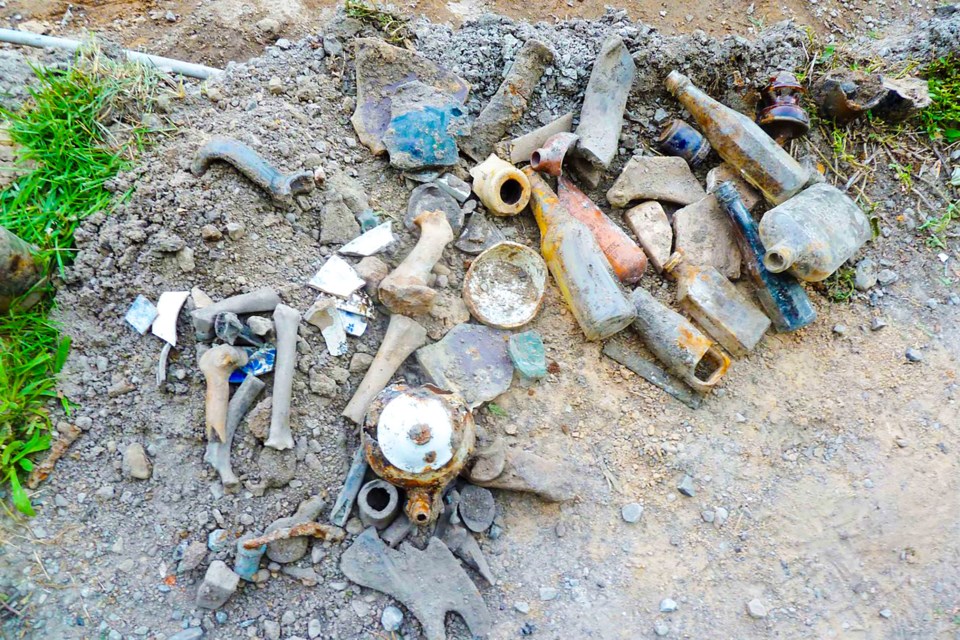An archaeological dig at the site next to the King George III Inn, in Niagara-on-the-Lake, has turned up a trove of artifacts from over a century ago, painting a vague picture of life by the Niagara River from a time gone by.
Mike Pitul, an archaeologist with Detritus Consulting Ltd., says the old hotel at 61 Melville St. has been resting on a “plethora” of historical artifacts. This dig was part of a larger process of preparing the site for a potential condominium development that would replace the inn on the site once known as the American Hotel.
Originally, Pitul and his team went in looking for the structural remains of the Niagara Harbour and Dock Company's warehouses, he said. The company operated from 1831 to the late 1840s, according to the Ontario Heritage Trust. Over the course of a seven-day archaeological dig, which started on Aug. 8, the team did find some remnants of the warehouses, Pitul said.
However, ceramic household items comprised the majority of the artifacts.
“It's really a menagerie of artifacts spanning, quite probably, a good 100 years or more,” he said.
He cited pots, plates, glass bottles and the remains of wooden chests and barrels among the findings. One of his team members found a sipping cap for a baby’s bottle among the ruins. Everything they find at digs like these tells a “piece of the story,” Pitul, who's been in archeology for 13 years, added.
That story, however, is in the early stages of being told: Pitul said he and his team still have to assess everything they uncovered and he couldn't get too specific about their findings.
Blythwood Homes is the real estate developer that bought the Melville Street site in June 2021, with plans to build a condo, subject to town council's approval. Rob Mills, president of Blythwood Homes, said the dig has drawn considerable interest from neighbours.
“Residents keep crossing into the archaeological site wanting to take pictures,” he said. Mills said his staff had to keep the area gated off to the safety hazard posed by the heavy machinery used during the dig.
August's dig was the fourth stage in a series of archaeological assessments the developer was conducting. Not all development sites require a stage four dig. However, Pitul learned in the first three stages that the site had “quite a lot of historical euro-Canadian material,” due to the harbour and dock company once using the land as a warehouse site.
According to the Ontario Heritage Trust, which works to conserve and protect Ontario’s historical sites and landmarks, the company employed over 400 people and was one of the busiest ports in Upper Canada when it peaked in the 1830s.
After salvaging as much historically significant material as Pitul could, the Melville Street condominium is ready to move onto the next stage, he said. Archaeological digs are “part of the planning process,” he said, and don’t usually cause delays for developers. They allow people enough time to salvage anything they can find and learn as much as possible from the site before anything gets destroyed by future development.
“You cannot do any construction or anything prior to having the archaeological dig completed,” Mills said.
But he also thought it would be smart to start early in case they found something with “high significance” during the dig. That way, his team could deal with it properly before moving on to construction.
Mills said his construction workers are filling in the holes left by the dig to prevent any potential injury to people. He expects to present the development project to council in the fall, at which point they can move to the next stage of the project and sort out some of the landscaping. There may be small changes to the design after hearing input from residents and the town’s advisory committees, he added.
Residents are going to see a “large landscape passageway” down Melville Street, he said, once the project is completed.
“I think it’ll be a huge improvement for people walking along Melville,” Mills said.
